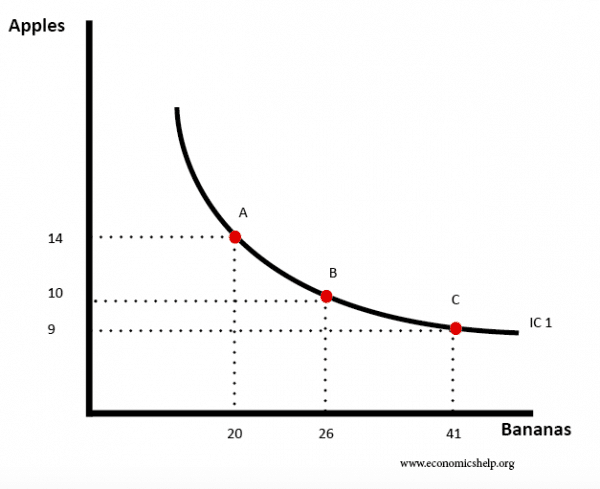Readers Question: what axioms underlie the theory of consumer behaviour? How reasonable are they? I have the axioms: completeness, transitivity, continuity, non-satiation and convexity. but we have never been taught about how reasonable they are and I can’t find any info anywhere! please help
It is an interesting question. I am not really qualified to give a good answer as I am not familiar with some of the terms you mention. However, I will look at the issue from a more general perspective.
Rational preference
If a consumer prefers A to B and also prefers B to C. Then, it follows a rational consumer should prefer A to C.
E.g. you prefer Starbucks to Costa Coffee and you prefer Costa Coffee to McDonald’s then you should prefer Starbucks to going to McDonald’s.
Are there consumers who might, given the above, still prefer McDonald’s to Starbucks? It is pretty unlikely, but, consumers can always behave on a whim. It is not impossible.
Convexity
Generally, consumption creates diminishing marginal utility. E.g. the 10th chocolate bar gives less marginal utility than the 1st chocolate bar. Therefore indifference curves will be convex.
However, it is possible some goods may have increasing marginal utility.
For example, one potato seed is of little utility because there is little to be gained by growing one potato. However, if you get 20 potato seeds, then it becomes worthwhile to prepare the ground and plant potatoes.
Continuity
If you prefer A to B today; then, in theory, you should prefer A to B tomorrow. However, we know that this assumption often doesn’t occur in the real world. Today we prefer fried eggs for breakfast. But, in the future we may value a healthy diet more, therefore next week we may prefer muesli to fried eggs.
Factors that affect consumer behaviour
- Default choices – Consumers stick with options they know well.
- Choice architecture – How goods are presented influences how people purchase
- Nudges – how people can be influenced by ‘nudges’ which encourage or discourage behaviour.


why is it that there are abnormal consumer, normally all consumer are rational but you will still see some abnormal consumer. you are doing a great job, giving student to gain more knowledge.
There is what we call marginal propensity to consume, that is, the more the income , the higher the demand for a rational consumer, but there are times that a consumer will abnormally reduce the quantity demanded despite the increase in his income, but they are rational because such goods are inferior goods.
The world is now facing what we call global economic crisis.Actually, what was the major cause?
when the law of diminishing marginal utility sets in on a consumer, the desire for a particular product changes and so does the buying pattern of that consumer. but there are cases when that happen and consumer want to buy more because there has been an increase in the income level. that is also total abnormality.
there is no doubt that you can have increasing marginal utility,but in reality i think diminishing marginal utility is mostly definately to set in again.for the potato seed scenario definately given the size of the land at a point in time an extra seed grown will set in diminshing returns.
Just checking if this is Francis Kweku Oduro from South Africa
how about the non satiation axiom?is it applicable